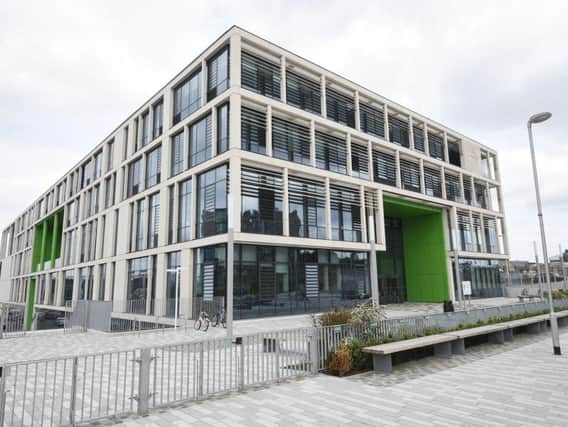Edinburgh Council spent £5.5m to heat and power schools last year as pupils complain it's too hot


The authority has been forced to make £33m of cuts from this year’s budget – while up to £150m could need to be saved up to 2023. Officials have previously warned councillors that “the current estate is too large for the budgets that underpin it”.
Heating and power bills for the city’s schools and nurseries are expected to rise by a further £376,000 in 2019/20 as officials draw up plans to become carbon neutral by 2030.
Advertisement
Hide AdAdvertisement
Hide AdNew high schools, Currie High and Trinity Academy could be built to Passivhaus standard, along with new primary schools. Passivhaus technology uses high levels of insulation and a mechanical heat recovery system to maintain a constant temperature without the need for central heating.
As part of the authority’s commitment for the city to become carbon neutral by 2030, Green councillors called for an investigation into how buildings could be retrofitted to Passivhaus or ‘gold’ sustainability standards and how much it would cost. But officials have also warned that the process “tends to be very costly and very intrusive”.
Statistics called for by Green councillors have revealed that in the 2018/19 financial year, the council paid out £3.1m on electricity and £2.4m on gas for its school and nursery buildings. This year’s electricity budget for schools has increased by £303,000 up to £3.4m for the financial year.
The question was tabled after meetings at Boroughmuir High and James Gillespie’s High and Primary schools, pupils “shared common concerns about schools being too hot, schools lights being kept on when not needed” as well as a lack of recycling facilities. Officials have now agreed to discuss the issues with youngsters.
Advertisement
Hide AdAdvertisement
Hide AdGreen Cllr Melanie Main said: “In my visits to primary and secondary schools, the young people are acutely aware of some of the basic housekeeping that needs to be addressed in their school buildings – turning off lights that are not needed and addressing classrooms that are too hot. Much of this is controlled centrally and there is a common thread in the discussions that buildings are not being run to the standards the young people consider appropriate.
“The young peoples’ understanding is impressive and their frustration is understandable. The council needs to listen carefully, to take swift action on the basis, and then engage about the changes needed to address the climate crisis.
“The figures given raise more questions than answers, that is why I have got agreement that the staff will meet directly with the young people to discuss how to improve school energy costs.”
In February the council’s head of property and facilities management, Peter Watton, warned councillors that difficult choices will have to be made in order to manage old school buildings amid costs increasing.
Advertisement
Hide AdAdvertisement
Hide AdHe said: “This current estate is too large for the budgets that underpin it. When we have an estate the size that we have got, something has to give. There’s going to be no easy choices moving forward.”
Cllr Alasdair Rankin, finance and resources convener, said: “Edinburgh has set itself a very ambitious target of becoming carbon neutral by 2030. As such we are always looking at innovative ways to improve sustainability across our estate. Reducing our heating costs in schools is part of this and one exciting development is our plans to build new schools to Passivhaus standard which essentially means they are highly insulated and require minimal central heating.
“This is a major step forward as we make our schools more energy efficient and complements steps already taken such as the installation of solar panels, increased use of double glazing and improved heating and ventilation controls.”